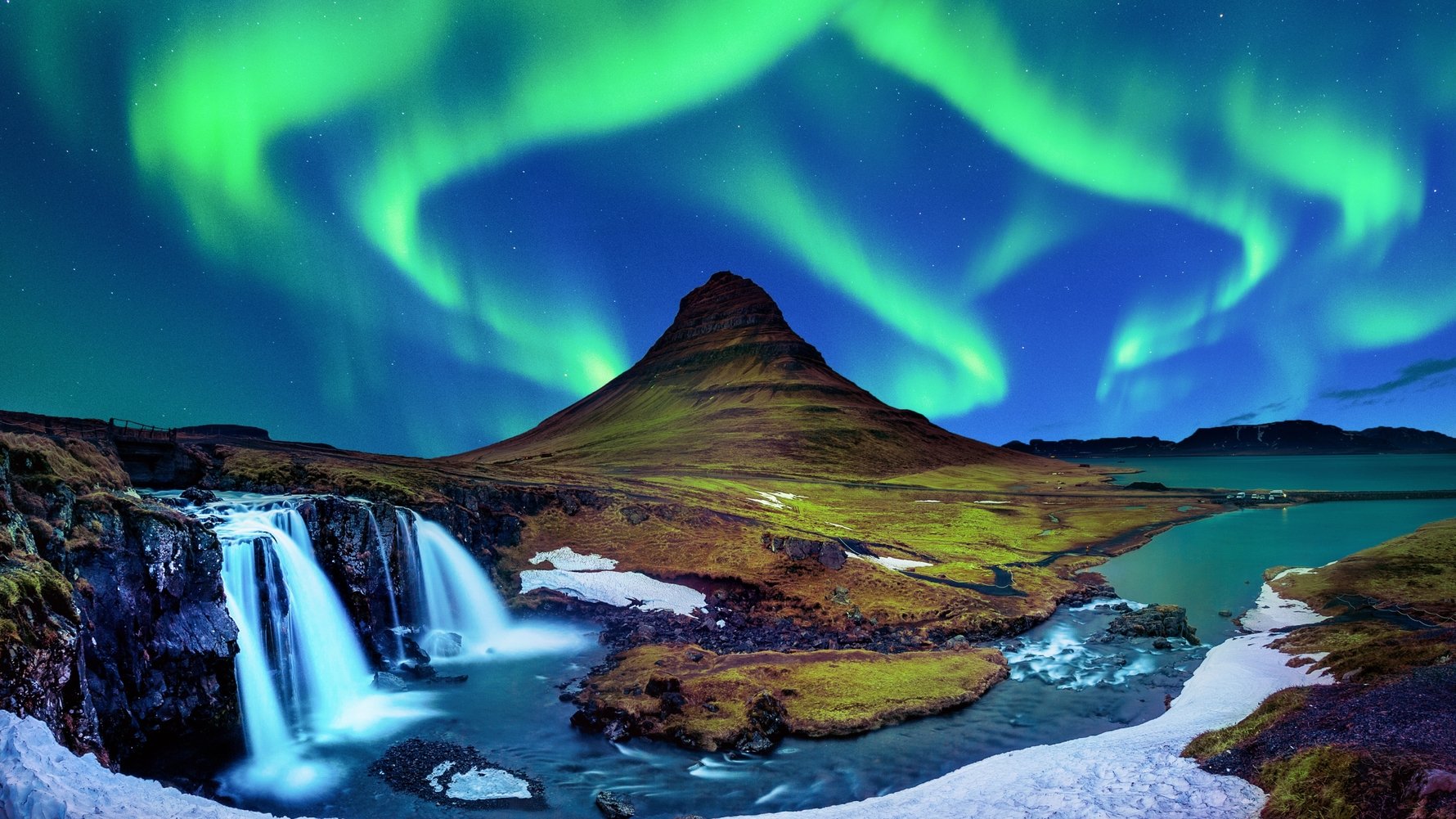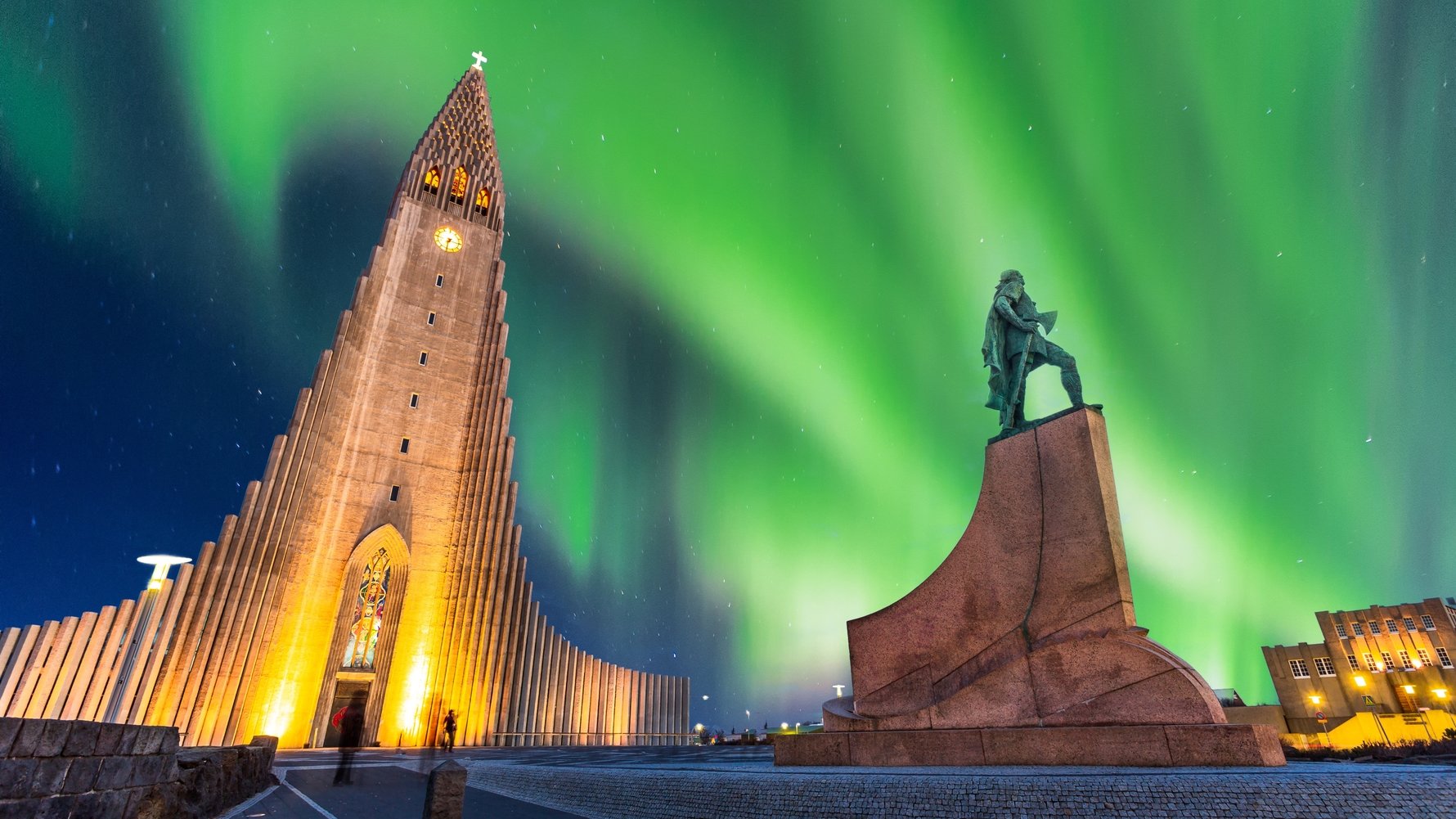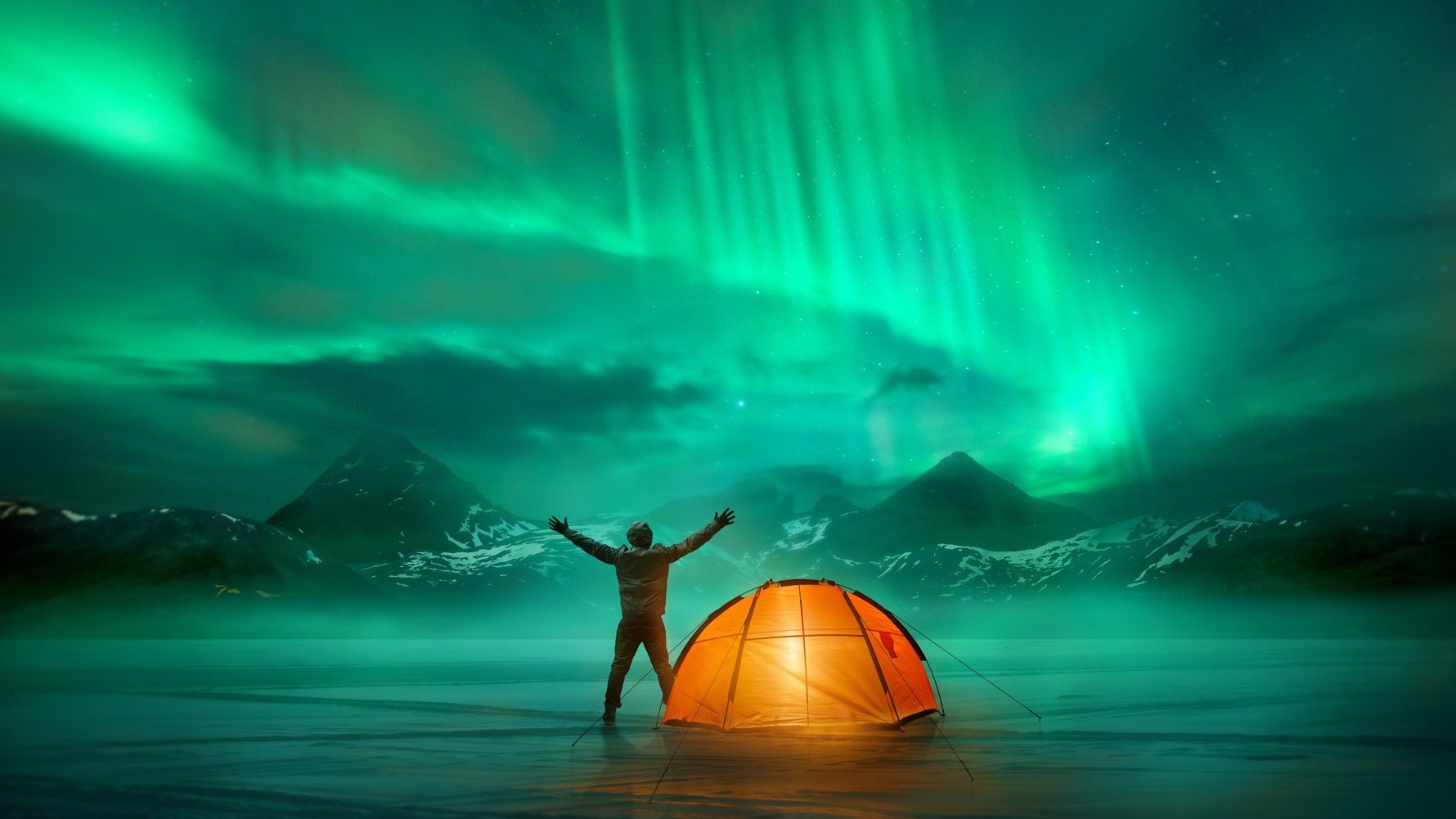
When?
The Northern Lights can be observed during the winter season, which is roughly starting in September and ending in April. It is not uncommon for them to appear as early as the middle of August, but their absolute peak is said to be from November to February.Where?
The Northern Lights don't have a constant location, and therefore you'll need to do a little "hunt" for them. The phenomenon is visible all throughout the Icelandic country, yet there are a few details to bear in mind:Places to the North of Iceland are more likely to provide a better view;
The Lights are more frequently noticeable outside the light-polluted regions, away from the big cities and urban areas;

They are visible only through the night when the skies are clear, and the weather conditions are good;
Snowstorms and fogs can be a huge obstacle. Unfortunately, the weather conditions in Iceland are quite dynamic, and these events can't always be predicted.
There are a special Northern Lights forecast that you might want to follow prior to planning your trip.
Most of the accommodations around the country provide a kind of "Northern Lights Awareness" service - the staff will wake you up and alarm you in case you're about to sleep through the show.

How?
You better find a place quiet, distant, and away from the distractions of the city. There are many cottages, lodges, and cabins around Iceland that are specifically designed to meet these requirements, and even provide special in-house equipment for observing the Northern Lights.Witnessing this scenery is sometimes life-changing, and if not - it's undoubtedly going to leave a strong impression. All you need to do is plan it wisely in order to enjoy it fully.


Comments